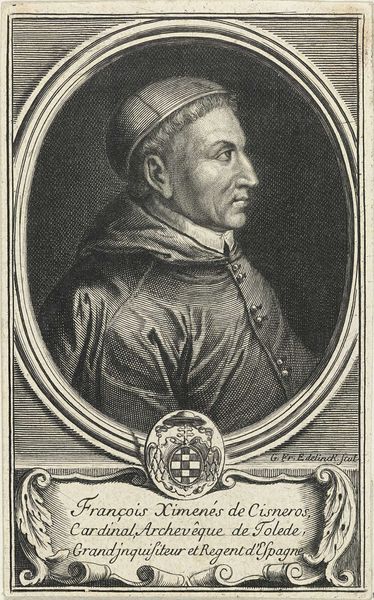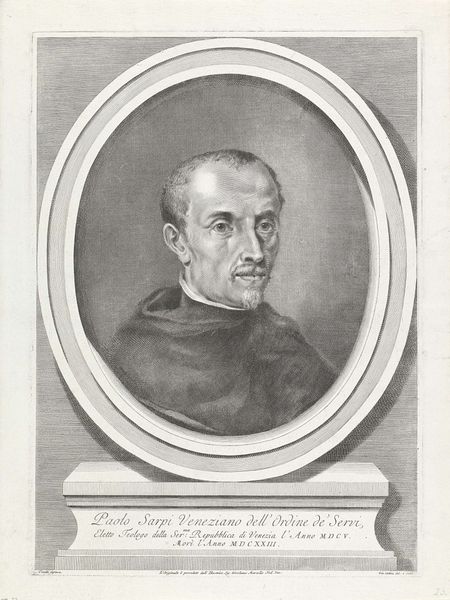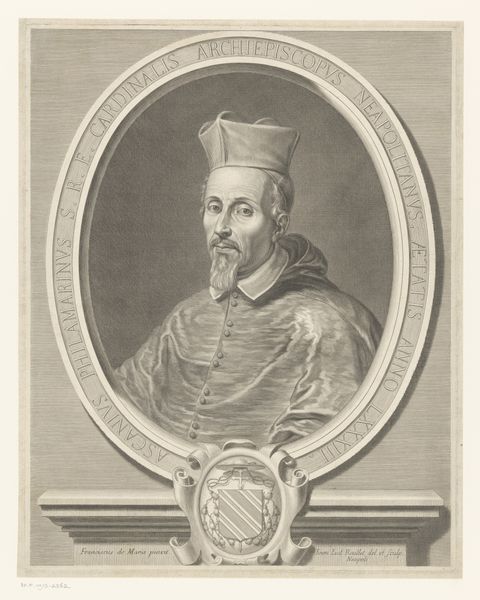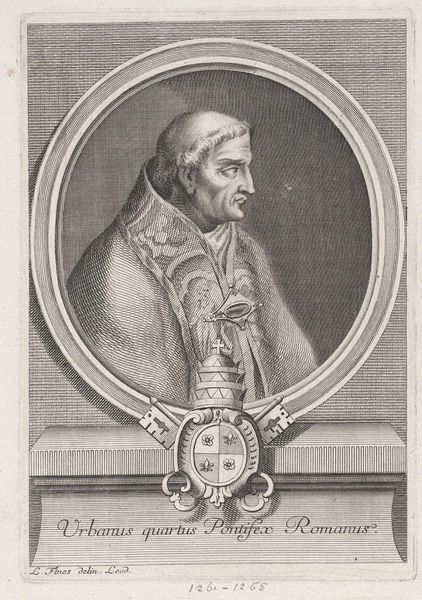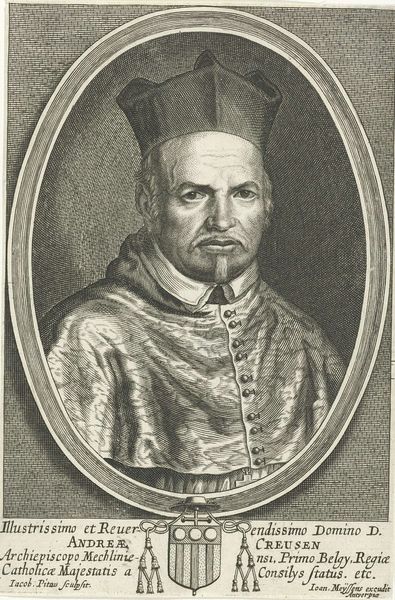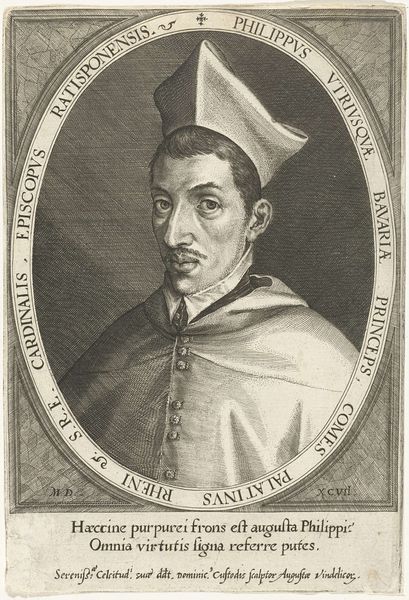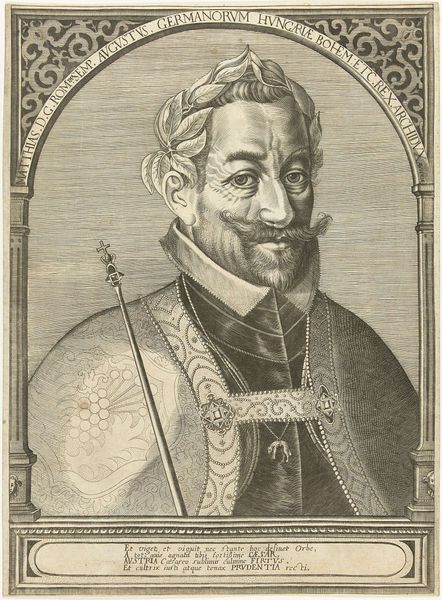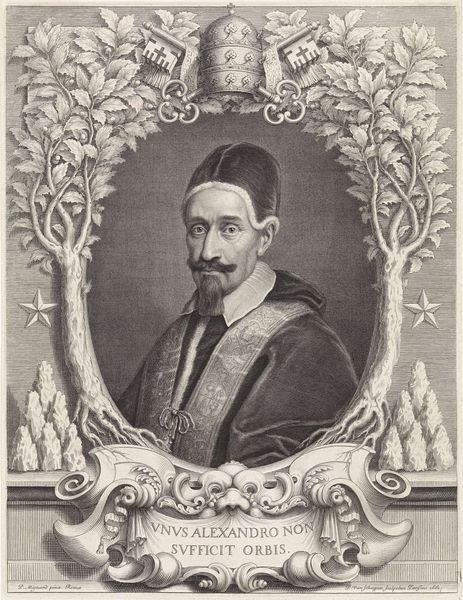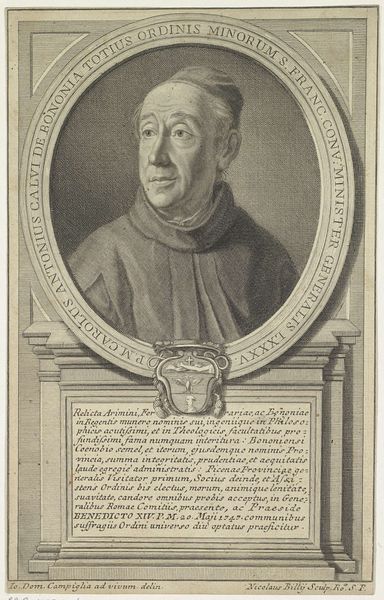
engraving
#
portrait
#
baroque
#
old engraving style
#
portrait reference
#
portrait drawing
#
history-painting
#
engraving
Dimensions: height 180 mm, width 115 mm
Copyright: Rijks Museum: Open Domain
Curator: Richard Collin, the artist behind this engraving from around 1674-1678, captures the likeness of Cardinal Johannes Bona. The piece resides here at the Rijksmuseum. Editor: There’s an immediate gravitas that strikes me – the high contrast of the engraving gives a very intense, almost severe, impression. Curator: Absolutely, and we can examine that severity. The portrait itself comes out of a time steeped in religious and political tension. Bona, a cardinal of the Cistercian Order, would have represented a particular kind of power structure in seventeenth-century Europe. How might that structure be complicit in social injustices of the time? Editor: I see that Cistercian symbolism reflected visually. His robes, rendered so precisely with all that engraving detail, mark him with a specific visual authority. That elaborate cartouche at the bottom framing the Latin inscription, and even the heraldic shield overhead—everything communicates legitimacy and long-standing power. Curator: Precisely. Consider, though, who this legitimacy excludes. We see this image now, perhaps removed from its original context, but these displays of power always necessitate a simultaneous act of suppression. Whose voices were silenced so that Bona's could be amplified? Editor: Yes, but on a more internal, personal level, don't you think his rather thin face, and almost pained expression are trying to communicate piety, too, and aren't meant to simply dominate? It reads almost ascetically—like deprivation. The shadows around his eyes even emphasize this element of solemn dedication to God. Curator: True, but the construction of piety is never innocent, especially within institutional structures. The visual vocabulary – the robes, the posture, even the lines etched on his face – function as part of the overall system. We cannot disconnect them. It is through the system and symbols that even these individual acts of supposed devotion take on new meanings. Editor: That tension, between the personal and the symbolic, feels inherent in the portrait and says a lot about the figure. Curator: For me, grappling with these questions – and seeing them manifested so meticulously – offers the best insights when viewing a work from this historical period. Editor: I appreciate the nuances and how you bring social questions to this baroque figure and its iconic dimension. It enriches and complexifies it, that’s for sure.
Comments
No comments
Be the first to comment and join the conversation on the ultimate creative platform.
